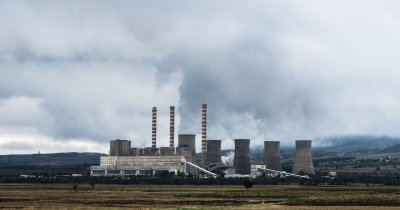What is hydrogen
First of all, let's get an understanding of what hydrogen is. Hydrogen is a gas that is colorless, odorless, tasteless and non-toxic, while also being highly combustible. It is a cleaner alternative to methane, which contributes to a lot of the short-term planet warming. Hydrogen is one of the most abundant elements in the known universe, accounting for about three quarters of its mass.
According to NASA experts, hydrogen comprises around 92% of our Sun, which gives us another vital resource for the green future of humanity, sunlight, which is converted by solar panels into electricity.

Hydrogen is being found on Earth in multiple forms and beings, including us, humans, but water could be one of our most abundant resources of hydrogen, which is where the cleanest form of hydrogen comes from.
How hydrogen is produced and what are hydrogen's colors
Here on our planet, hydrogen isn't all that common in gaseous form, which is why we have to produce it through chemical and industrial processes, rather than capture it from the air, such as we do with carbon dioxide.
This is quite unfortunate, since only the latter is considered entirely planet-beneficial and desirable, but with the help of added solar and wind capacity, this number can grow in the coming years.
Regarding the production process, this is where the "colors" of hydrogen come from. Grey hydrogen, for example, is designated as such because it comes from natural gas or coal and is the least desirable form of hydrogen out there. To produce grey hydrogen, carbon emissions are released into the atmosphere.

Blue hydrogen is produced in the same way as gray hydrogen, the difference being that the released greenhouse gas emissions are captured right before they escape, which means that they don't get to pollute the atmosphere. This is definitely more climate-friendly, but still not ideal, as we need to capture the CO2 that would otherwise reach the atmosphere.
Green hydrogen is the third more common „color” of the gas and is the one that authorities pursue the most, as it implies producing hydrogen through electrolysis, which doesn't release any emissions. However, for green hydrogen to be considered truly net-zero, the electricity used for electrolysis needs to come from renewable sources, such as solar or wind power.
There are a few more colors that are attributed to hydrogen production, but there are less common, although one could become more well-known, should France start making it that way. Thus, we have black hydrogen, made from bituminous coal, brown hydrogen, which is produced from lignite and red hydrogen, made from burning biomass.
Remember what I said above about France? Well, pink hydrogen is another type of hydrogen that we could see more of and that is considered, by some at least, to be planet-friendly. It is being produced through electrolysis with the help of electricity coming from nuclear power plants. Depending on who you ask, nuclear-derived energy is considered green, if the radioactive waste is managed properly.

Also, if there is a mix of renewable and fossil-power involved in the electrolysis process, that ends up generating what experts call yellow hydrogen.
White hydrogen was first discovered accidentally in Mali back in 2012 and after the excavations that took place at the time, a number of companies and startups started developing the technologies that could enable us to extract and use this gas on an industry-wide level.
Why we need hydrogen for the future of clean power
Hydrogen could be one of the fuels that we can use for many of the purposes that we already use natural gas for, such as heating our homes and offices, but without releasing any polluting emissions into the atmosphere. It can also be used in the automotive industry, alongside batteries, to put clean-energy vehicles on the road, in the air and on our seas and oceans.
Hydrogen is one of the fuels which can help us decarbonize most of our activities, if we are able to produce enough of it and if we can do so in a sustainable way.
 Mihai - Cristian Ioniță
Mihai - Cristian Ioniță












Any thoughts?